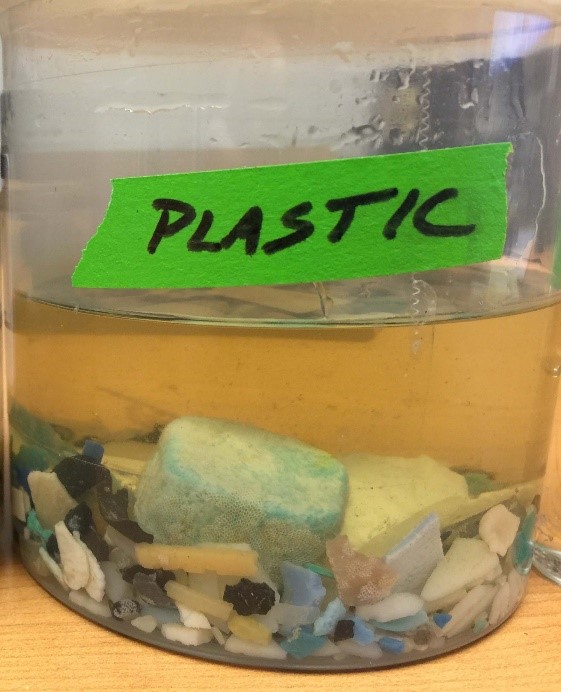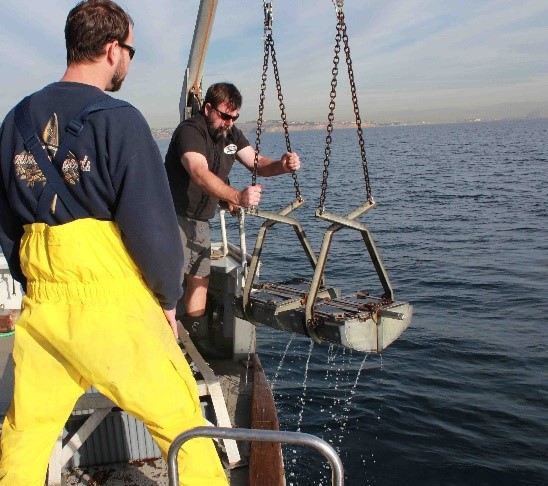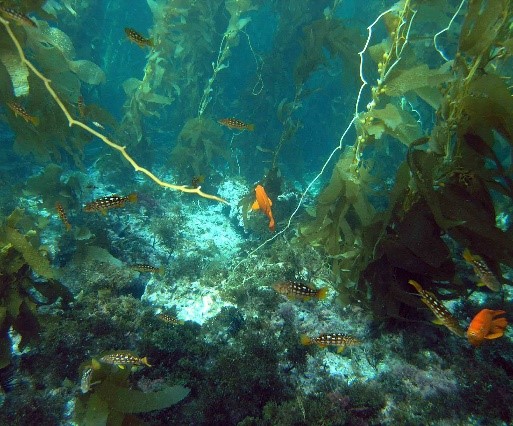Bight ’13 regional monitoring wrapping up major elements

Three of the five elements of the Southern California Bight 2013 Regional Monitoring Program are winding down as a series of final assessment reports is published over the next few weeks.
The Sediment Chemistry volume of Bight ’13 was published in April, complementing the Sediment Toxicology volume published in December, and the Rocky Reefs and Trash and Marine Debris elements will be publishing their final reports in May.
The Shoreline Microbiology element, which is focused on developing rapid microbial contamination detection methods, and the Nutrients element, which is focused on modeling the relative contributions of land-based nutrient inputs to the Bight’s biogeochemical cycling processes, will publish their findings in 2017.
Bight ’13, the fifth cycle of the signature Bight marine monitoring program, involves nearly 100 participating agencies and sampling at nearly 400 sites. It builds on a two-decade legacy of uniting Southern California water-quality management agencies to conduct highly leveraged, coordinated monitoring across the entire Bight region, from the bottom of the deepest ocean basins to the top of estuaries.
Facilitated by SCCWRP since its inception in 1994, the Bight regional monitoring program has effectively consolidated and integrated what were once discrete, disconnected programs. The program’s goal since its inception has been to answer big-picture questions about the ecological health of the Bight and how conditions are changing over time.
SCCWRP and its original 12 participating agencies designed the Bight program in response to sharp criticisms from the National Research Council and others that Bight monitoring efforts were focused too narrowly on the areas surrounding wastewater outfalls; the Bight program is now recognized as a model emulated nationwide. Planning for the sixth cycle of the program – Bight ’18 – will kick off in 2017. For more information, contact Ken Schiff.
Bight ’13 Sediment Chemistry: Concentration of PBDEs falls dramatically across Bight
The concentration of the class of flame retardant chemicals known as polybrominated diphenyl ethers (PBDEs) has dropped by 92% in Southern California Bight embayments over a five-year period, and by 50% offshore, according to the findings of the Bight ’13 Sediment Chemistry element.
The declines indicate that management actions to restrict the sources of these contaminants have been successful. From 2004 to 2013, regulators implemented various restrictions on production and use of the commercial formulations of PBDEs, including in California.
The Bight ’13 Sediment Chemistry final assessment report also found that concentrations of legacy contaminants such as DDTs, PCBs and metals remain largely unchanged.

Bight ’13 Trash and Marine Debris: Trash, debris spreading across Bight, watersheds
Trash has been found in more than three-fourths of Southern California’s 7,400 kilometers of streams, and marine debris has been found in about one-third of ocean bottoms, according to the findings of the Bight ’13 Trash and Marine Debris element.
Overall, the study found that the area of the Southern California Bight seafloor containing debris has doubled since 1994, when Bight regional monitoring was first launched. The area of the Bight seafloor containing plastics has tripled since 1994.
Bight ’13 Rocky Reefs: New tools seek to discern impacts of fishing vs. pollution

A series of environmental scoring tools has been created for the Bight ’13 Rocky Reefs element to gain new insights into the relative impacts of fishing vs. pollutant discharges on Bight subtidal rocky reefs.
A fishing index was created to measure extraction density, a plume exposure index was created to measure pollutant loading and plume exposure, and a reef response index was created to measure biological impacts.
An analysis using the tools found that overall, rocky reefs appear to be more sensitive to fishing than to pollution loading, although these twin stressors tend to build upon one another to exert cumulative impacts.
The Bight ’13 Rocky Reefs element recommends continued monitoring of rocky reefs as stormwater best management practices (BMPs) are implemented and as Marine Protected Areas reduce fishing pressures.
More news related to: Regional Monitoring, Southern California Bight Regional Monitoring Program, Top News